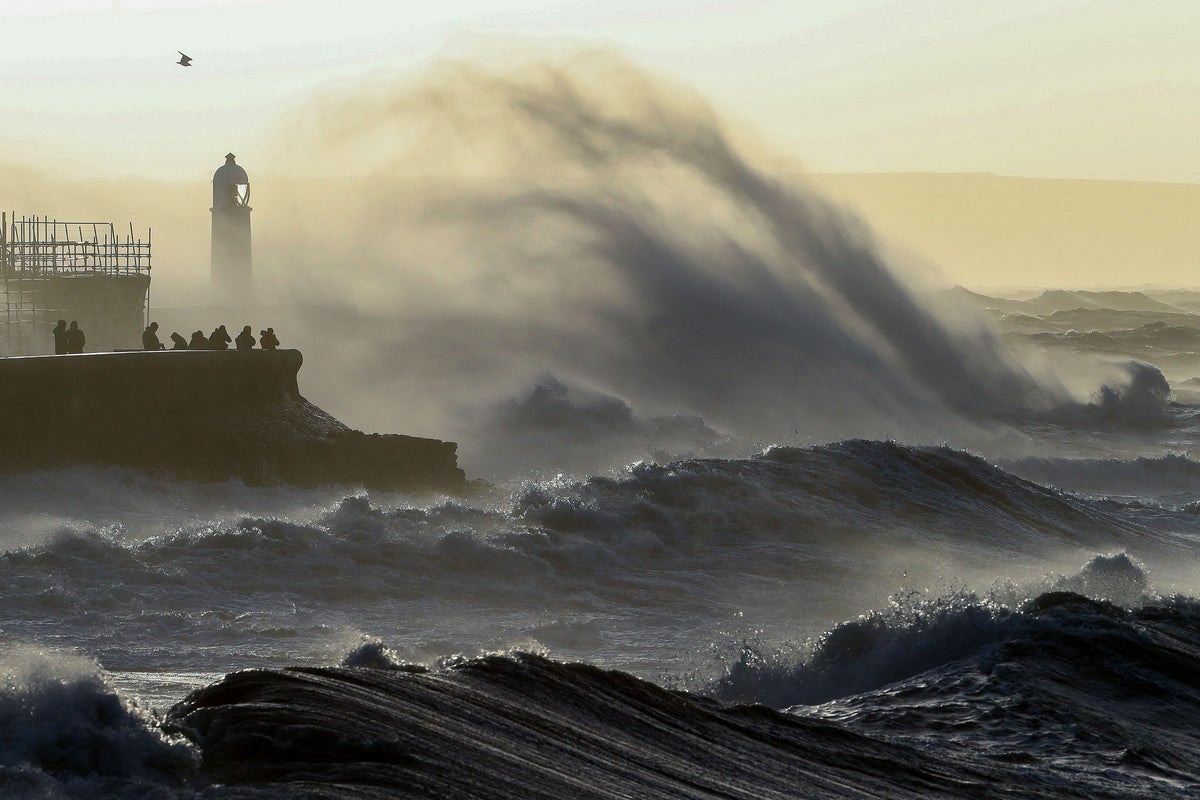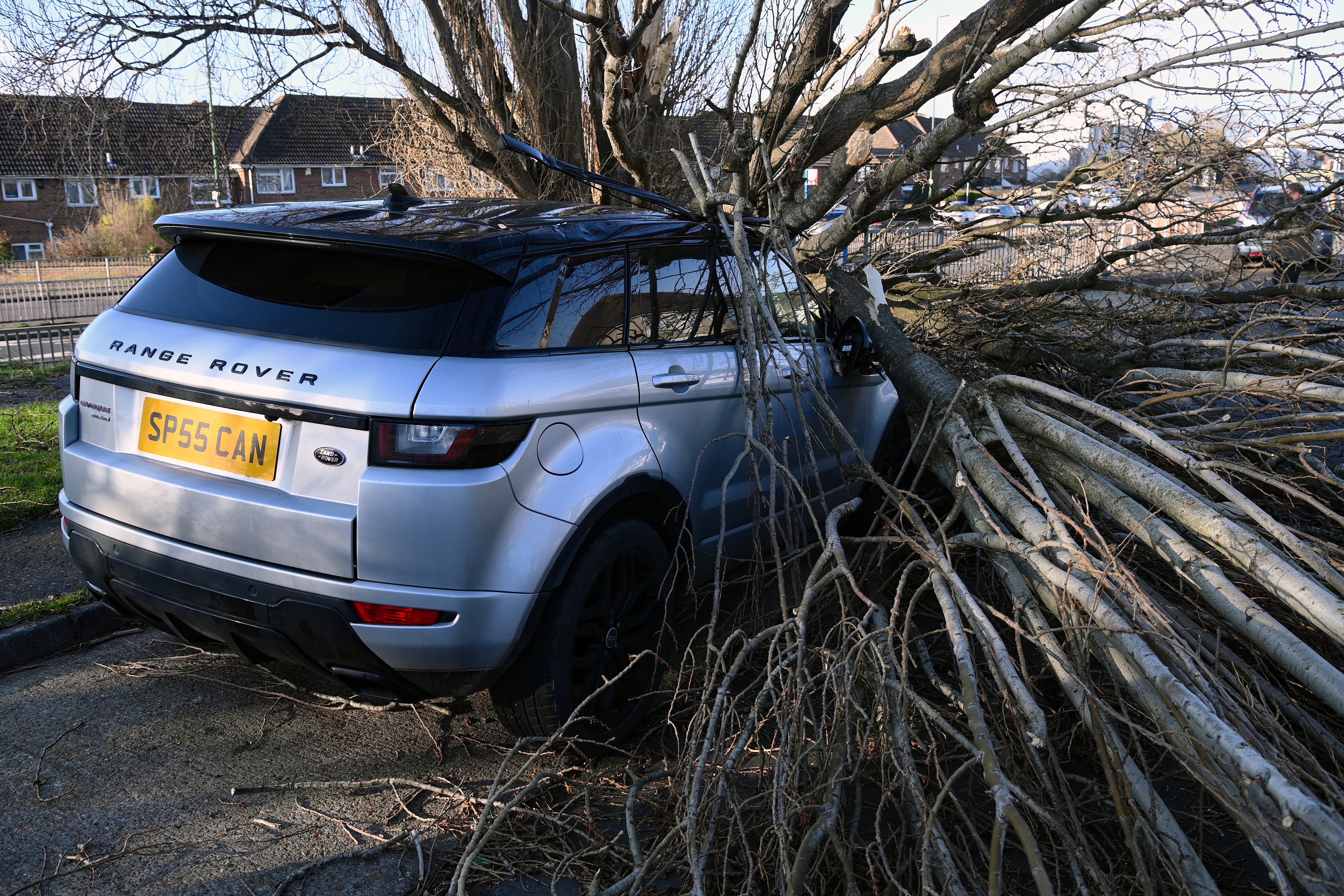
Clusters of powerful winter storms have been made more likely by an “intense swirling vortex of winds” miles above the Arctic, scientists have found.
A team of researchers from the Met Office and the University of Leeds has pinpointed a new reason for winter storm clusters, such as the trio named Dudley, Eunice and Franklin, which took place within the space of a week in February 2022.
The findings, published in the Communications Earth and Environment journal, reveal that the series of UK winter storms was connected to stronger winds in the Arctic stratosphere.
Researchers believe this could help weather forecasters to better understand when there is an increased risk of storm clusters up to a month before they happen.

The UK and Ireland experienced another spate of storms in January this year, with Storm Eowyn bringing gusts of over 100mph to some regions. It was described as a once-in-a-generation storm.
Lead author Dr Ryan Williams, at the University of Leeds, said: “Our research demonstrates the need to better understand the different drivers of the North Atlantic storm track, such as the state of the stratospheric polar vortex that is potentially predictable several weeks in advance.
“Being able to provide early warnings of possible severe weather is all the more pertinent with climate change, as there is evidence that major winter storms will become more intense, exacerbating impacts such as flooding and wind damage."
Several intense cyclones hit the UK, Ireland, Scandinavia and Germany in February 2022, which became the first time since 2015 - when the Met Office began naming impactful cyclones - that Britain experienced three named storms in a week, Dudley, Eunice and Franklin.
Four people died during the storms, as one million homes were hit with power outages that lasted several days. Storm Eunice was, at the time, described as a once-in-a-decade event. It was the most severe since 2014, with record wind gusts for England of 122mph recorded at the Needles on the Isle of Wight.
Researchers note that February was also characterised by an extremely strong stratospheric polar vortex - a large spinning mass of cold air in the stratosphere around 15 miles above the Arctic that is prominent during winter months.

The researchers wanted to understand how this strong stratospheric polar vortex (SPV) was driving the risk of the storms, something which had not previously been well explored.
They compared seasonal forecasts from January 2022, which showed the unusually strong state of the polar vortex, with those that suggested it would be close to average strength. Examining the properties of UK storms in these contrasting forecasts allowed them to identify the influence of the SPV.
They concluded that the strong SPV had made it up to three times more likely there would be intense storms affecting the UK and Northern Europe during February that year. It also increased the likelihood of three or more storms reaching the UK in a single week by around 80 per cent, compared to when the SPV is normal.
Researchers said the signal for a strong SPV was evidence from forecasts carried out as early as November 2021, and spotting these conditions could offer a “window of opportunity” for enhanced European predictability.
Co-author Jeff Knight, the science lead in monthly to decadal prediction at the Met Office, said: “It’s been understood for a while that the Arctic stratosphere can affect the type of winter we get in the UK, but these results show that it can even affect the occurrence of stormy spells within the season.
“An intense stratospheric polar vortex can now be recognised as a warning to forecasters of increased risks of damaging storms. This was likely seen in the most recent winter, around the time of Storm Eowyn in late January.”
Professor Amanda Maycock from the School of Earth and Environment, who led the project, added: “The stormy conditions and strong stratospheric polar vortex during February 2022 bare parallels to other periods, such as what occurred in February 2020 and even what we have seen at the start of this year. Future work should investigate the connection we have found for other winters.”
Rain and cooler weather help South Korean fire crews battle devastating wildfires
Arctic sea ice hits record low for its usual peak growth period
Scientists reveal cause of deadly storms which battered UK in space of a week
Trump claims offshore wind energy is driving whales ‘loco.’ Scientists disagree
Royal news latest: King seen for first time since cancer treatment side effects
Build child-safe smartphones rather than impose school bans, experts urge







